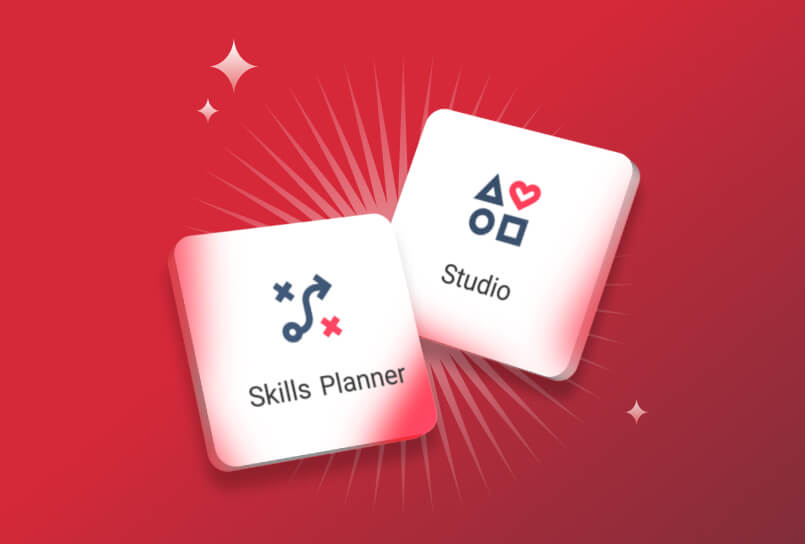The Big Stay: how to navigate the newest HR trend
Why internal mobility will be crucial for keeping employees engaged for the long haul After HR teams spent years brainstorming ways to improve retention amidst the Great Resignation, talent management trends are turning in the opposite direction. We’ve now entered what’s being nicknamed the Big Stay—a period of time in which employees are choosing

Why internal mobility will be crucial for keeping employees engaged for the long haul
After HR teams spent years brainstorming ways to improve retention amidst the Great Resignation, talent management trends are turning in the opposite direction. We’ve now entered what’s being nicknamed the Big Stay—a period of time in which employees are choosing to remain with their current employer for longer durations.
This trend is already impacting quit rates, with LinkedIn data revealing the rate of people staying in roles for less than one year is down nearly 30% compared to 2022. Hiring is also starting to slow, with the United States adding 209,000 jobs during June, a marked decrease from prior months.
While employees’ increased desire to stay with their organization is typically welcome news for employers, there are a few best practices HR teams should harness to ensure this talent management trend works to the advantage of both their business and their people.
What is the Big Stay?
The Big Stay is a relatively new term that’s being used to describe the uptick in workers who are hunkering down and remaining in their current jobs for longer time periods. It can be thought of as a slowdown in work turnover and is seen as a sign that job and labor markets are beginning to approach pre-pandemic trends.
Employees’ decision to stay put is a serious contrast to the job-hopping that dominated much of the past two years. Although the Big Stay will reduce turnover rates, there’s also a risk that employees are choosing to stick with their jobs while becoming disengaged. These workers may be putting in the bare minimum and thus participating in another hot talent trend: quiet quitting.
Why is the Big Stay becoming so popular?
The Big Stay is a trending topic because it illustrates the way that job and labor markets are changing. For most of 2021 and 2022, we saw a record number of job openings, which motivated many employees to leave their roles in search of brighter futures elsewhere.
However, more recently hiring and quit rates have begun moving in the opposite direction. For example, in March 2023, the number of quits dropped to 3.9 million, the lowest level since May 2021. At the same time, the number of new jobs being added to the economy started dropping off.
While there are several reasons why so many employees might be choosing to stay put, an uptick in lay-offs and hiring freezes is likely part of the equation. Some workers might fear that taking a new job will make them vulnerable to future layoffs, while hiring freezes limit the number of open opportunities for employees to consider.
Another factor influencing today’s low quit rates may be the way workplaces have changed over the last few years. During 2021 and 2022, employees made their wishes known and advocated for better work-life balances, purpose-driven careers, and a sense of belonging. As companies continue to step up and meet their people where they’re at, these organizations might notice that workers are no longer as eager to leave as they once were.
How will the Big Stay impact HR teams?
The Big Stay presents new opportunities and challenges for HR teams. While retaining employees may no longer be as challenging as it once was, that doesn’t mean employers can get complacent when it comes to career mobility and development opportunities.
HR leaders must also keep in mind that although their people are more interested in “staying” at their companies, these employees won’t necessarily want to stay in the same role. To keep people engaged and prevent workers from quiet quitting, HR teams must ensure their workforce has access to an array of growth opportunities across their organization.
5 steps HR leaders can take to engage employees during the Big Stay
If you’re looking to upgrade internal mobility to keep your workforce motivated and inspired, here are a few best practices to prioritize:
#1. Give employees complete visibility into open opportunities
Whether we’re in the middle of the Big Quit or the Big Stay, access to career development opportunities will always move the needle when it comes to keeping employees engaged. All too often, workers only have visibility into a limited number of career opportunities, typically those within their domain. Rather than letting siloes and barriers put a damper on workplace satisfaction levels, visionary organizations are harnessing talent marketplaces to generate suggestions for projects, gigs, and full-time roles based on employees’ skills, interests, and career goals.
#2. Put people at the helm of their career development
Although there may not be as many opportunities for internal career moves during the Big Stay, HR teams must send a clear signal to their workforce that career development is a priority. One way to do that is by using the career pathing tools within a talent marketplace. Top offerings will provide personalized career paths suited to an individual’s goals, experiences, and interests and enable workers to chart a path to their dream role and map out the steps they’ll need to take to make it a reality.
#3. Ensure all development resources are easily within reach
Career growth is about so much more than adding a new title to your resume. To make promotions and lateral moves possible, employees need access to a breadth of development resources, from coaching to volunteering to content-based curriculums.
While most organizations invest in employee development (and have as many as 70 different applications for it), people are often unsure about where to go to find various learning resources. Instead of letting uncertainty hold workers back, leading companies are utilizing an opportunity hub to centralize all volunteering, learning, and training resources—in turn, encouraging employees to take advantage of them.
#4. Create a culture of talent sharing
Although the Big Stay is about sticking with your organization, that doesn’t mean that the flow of talent to open opportunities should become stagnant. In fact, encouraging employees to lend a hand on projects and gigs across your organization is an effective way to keep people motivated and empower everyone to hone new skills.
Managers should be encouraged to make the shift from viewing talent as “theirs” to thinking of all employees as shared resources that their entire organization can tap into whenever an opportunity arises that aligns with their skill sets.
#5. Upgrade your mentoring program
Mentoring is always a win-win—but it’s likely to be particularly beneficial during the Big Stay. Even if employees can’t move into new full-time roles right away, having the chance to learn about a position from their colleagues’ eyes can help them get excited about new opportunities and prepare for them. The best mentoring programs will match mentees to mentors based on the skills they have and the knowledge they wish to learn, rather than letting pairings be dictated by job title or level of seniority.
To learn more about what it takes to keep employees engaged and satisfied, check out our research report on workforce agility, which measures how workers’ expectations stack up with HR priorities.





